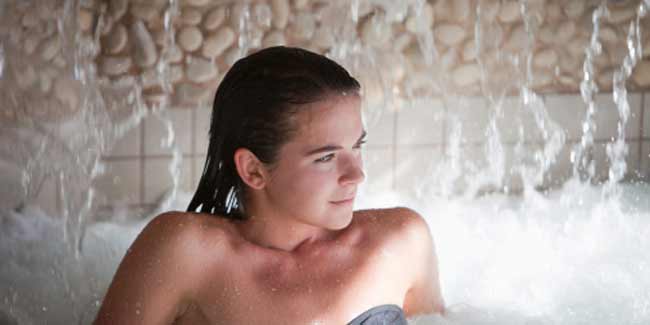
Nothing beats a long soak in the bath tub to soothe aches and pains, both mental and physical. A relaxing bath is well appreciated for its unwinding effects after a stressful day but what many people don’t know is that water usage is actually a recognised and prescribed treatment for stress relief.
Dating back to the ancient Greek era, hydrotherapy was introduced by Father Sebastian Kniepp, a Bavarian monk, in the 19th century. He showed the world how hot water could help the body to get rid of waste by releasing toxins.
Hydrotherapy is the use of water for the treatment of diseases. It makes use of the body’s reaction to hot and cold stimuli, to the protracted application of heat, to the pressure exerted by the water, and to the sensation of the water itself. It has been theorized that brief changes in body temperature like a cold swim or warm bathing could help the brain function effectively.
Table of Content:-
Types of Hydrotherapy
There are several ways in which you can experience hydrotherapy for stress relief easily and efficiently. They include:
- Home bath: Fill up your bath tub with warm water after adding bath oils, aromatherapy oils, etc. to it and dip your body in it.
- Sauna: This uses dry heat to clean out skin's pores and melts away the day's stresses.
- Turkish bath or Hammam: Wet heat that accomplishes what a sauna does in a different type of environment.
- Sitz bath: Soak one foot in a tub of hot water and the other in a tub of cold, alternate after a few minutes. This is especially good for haemorrhoids and menstrual problems such as PMT.
- Whirlpool bath: Bubbles make this warm bath extra relaxing.
How does Hydrotherapy Work against Depression and Anxiety
When we bring water of different temperatures in contact with our skin, it changes our physiology and mood. A cold swim initially gives us a shock of cold which is actually inspiring for the body and provides strength and vitality.
The cold causes the blood vessels to tighten up which makes the blood move from body's surface to the core in order to conserve heat. Not only does it conserve heat, it also reflexively bathes the brain and vital organs in fresh blood, bringing oxygen to help detoxify the area. 
Talking about hot or warm water, when you take a warm water bath, your blood vessels tend to relax, bringing blood up to the surface. Due to this, the blood moves back, away from the core, cleaning it in the process.
Scientific Support for Hydrotherapy as a Treatment for Depression and Anxiety
The use of hot and cold baths has been backed by research too. A research (Toda et al., 2006) had reported that bathing with water decreases levels of the stress hormone, cortisol, in the body.
Another study (Marzsziti et al., 2007) had shown that it may also help balance of feel good neurotransmitter serotonin.
Footbaths induce relaxation by decreasing stress response; it has been noted that footbaths cause the sympathetic nervous system (the ‘fight or flight’ part of our nervous system) to be able to calm down (Yamamoto et al., 2008).
However, little research has been done to study benefits of hydrotherapy for mood. One study suggests that patients with anxiety can benefit from the mechanisms of hydrotherapy. Balneotherapy (using water baths for healing) was compared in one French study to paroxetine (Paxil), a leading SSRI (serotonin-specific reuptake inhibitor) medication.
Go by the ancient wisdom or your own experience. The next time the day feels heavy, soak yourself in the good old water to light up with energy.
Image Courtesy: Getty
Read more articles on Hydrotherapy.
Read Next
5 Home Remedies for an Eye Stye
How we keep this article up to date:
We work with experts and keep a close eye on the latest in health and wellness. Whenever there is a new research or helpful information, we update our articles with accurate and useful advice.
Current Version